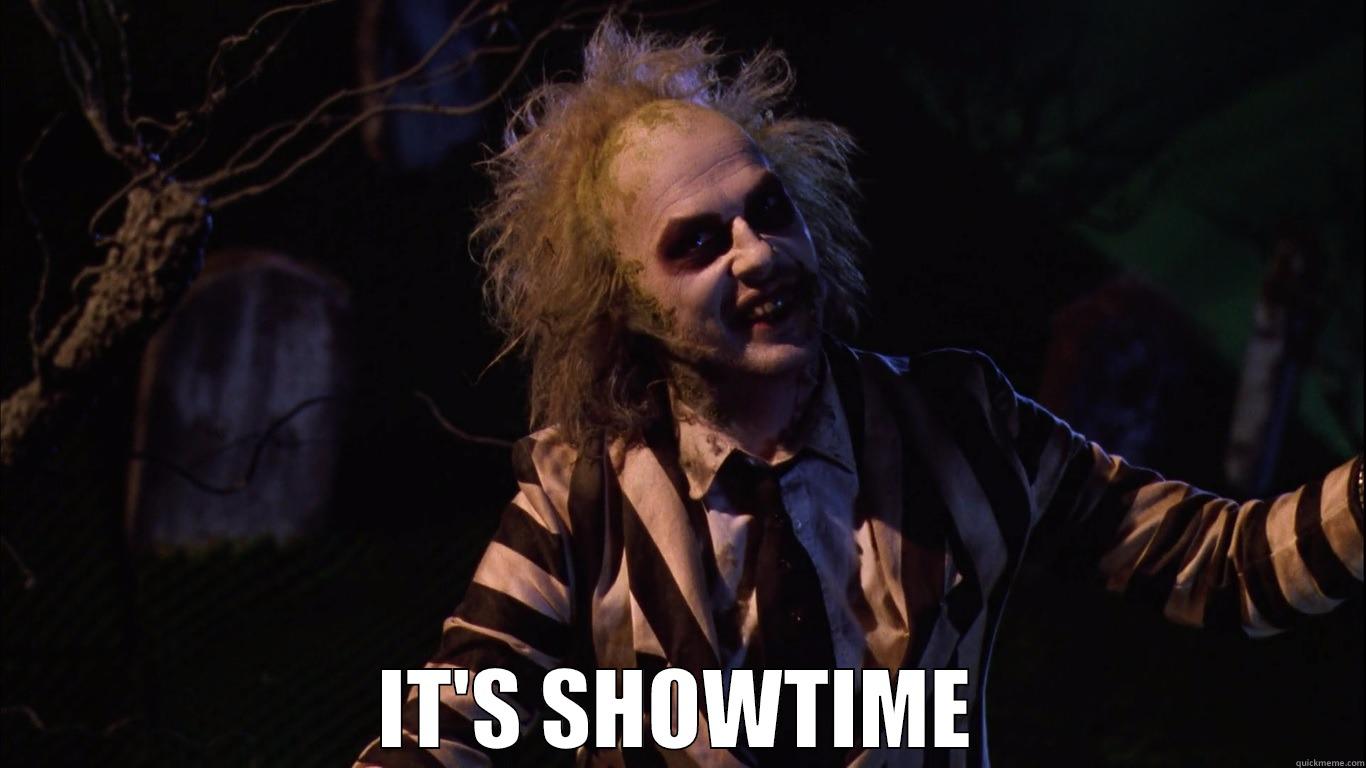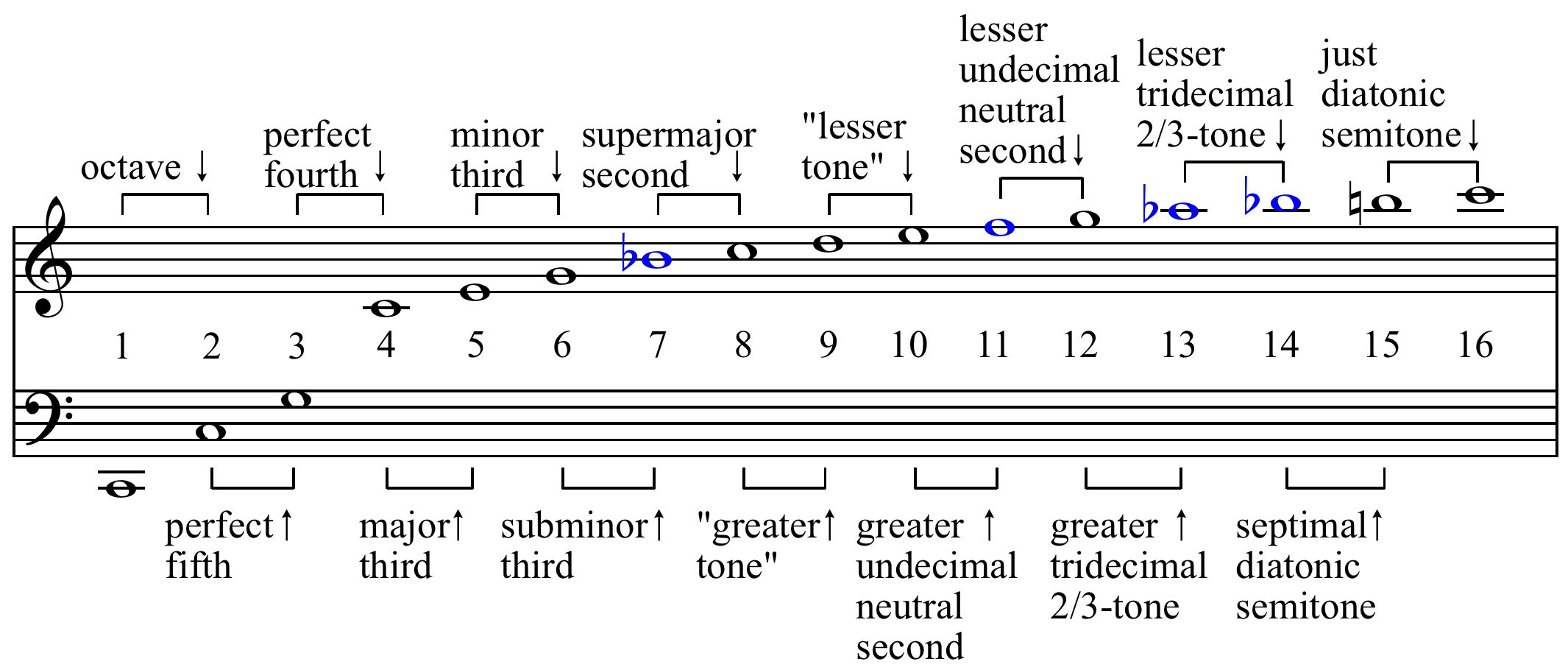Welcome to our forum. A Message To Our New and Prospective Members . Check out our Forum Rules. Lets keep this forum an enjoyable place to visit.
Currently working on errors from the latest (SimplePress) forum update. Many issues have been resoled and others are being worked on. Thank you for your patience.
 Topic RSS
Topic RSS



 (13 votes)
(13 votes) Regulars
 Offline
Offline





It's the overtone/harmonic series. Some intervals are Pythagorean, some are sharp, some are flat. But giving every interval a technical name is akin to blinding with science, IMO ("subminor third" is nothing more than gobbledegook for "flat minor third"). An alpine horn just uses the top octave, and your embouchure attempts to iron out the poor intonation. It doesn't really amount to a lot more than trying not to make the fourth too sharp. Most horn players wouldn't go above the fifth.
Andrew
Verified human - the ignominy!
Regulars
 Offline
Offline





Well you should watch that!
Actually I've oversimplified it. I'm going to bed now. While I'm asleep you can work out the maths of the overtone series. You'll find that it gives "whole tones" of 9/8 and 10/9 (from memory). 9/8 is known as the major whole-tone and 10/9 is known as the minor whole tone, with similar for other intervals. Have fun!
Andrew
Verified human - the ignominy!
Regulars
 Offline
Offline








@Gordon Shumway -
Thanks for sending me down another rabbit hole! 🤨
My almost 6 year-old Grandson enjoys Math MUCH more than I do, but I did take a peek at interval info on your favorite site (Wikipedia 🤣).
The Pythagorean Interval Page - has a GREAT chart (with audio!) for comparing the sound of the common, PLUS diminished & augmented intervals!
The List of Pitch Intervals Page - also provided audio for comparison - but way too much crazy stuff, like how are we supposed to tell the difference between the Sixty-seventh Harmonic and the Hard Semitone/two-fifth tone small semitone? 🥴
@Fiddlerman -
Thank you!
I was pretty sure I didn't need to know all these! 🤗
I've learned a few tunes with a perfect 4th double stop, otherwise I probably wouldn't have much reason to be aware of it - and I know I'm playing diminished & augmented intervals in some tunes, so I hope I can learn to identify them properly... down the road. I think listening to the Pythagorean Interval chart is VERY helpful😊
...my intervals might be a Pythagorean Fuzzy Set. 😱
- Emily
Regulars
 Offline
Offline








I've been neglecting this area, but INTERVALS & EAR-TRAINING go hand in hand!
I'm still only able to identify: some intervals I hear, a few chords, a few scales, and I can only start to guess at chord progressions. I'm pretty good at playing notes and intervals I hear, even though I'm not able to say what some are called - so I only have some Relative Pitch ability, but not as much as I'd like.
I think there are still many self-taught people here who have NO ear-training.
It is IMPORTANT - any effort you put into learning to hear pitch and intervals, will have a positive effect on your intonation and make learning music easier.
IMHO, some peculiar aspects of playing the fiddle and traditional folk music is worth mentioning, because I think it has hindered my ability to identify intervals better. It took me a long time to really understand that we play with a few different intonation systems - AT THE SAME TIME. We tune our fiddle to perfect 5ths, and are fine with scales & intervals... until we want harmony, then some adjustments are made to intervals that aren't a perfect 5th or a perfect 4th. I heard these adjustments as "microtones". Then, to add to my confusion, I found "microtones" used in traditional folk music around the World.
So, I hear MANY different intervals that can change as I play from tune to tune!
I came from a little piano background, where multiple intonation systems & microtones don't exist - others here have come from backgrounds playing other instruments, so will have different views (always love to hear them 😊).
I have been looking into some apps to help. There seems to be several kinds; one kind seems to be geared to identifying intervals in scales, another kind seems to be better for scale degree, chords and chord progressions. Still one more was actually a suite of apps that even helped with microtones! I need to look closer.
This video is worth watching!
Some GREAT tips - even talks about why we should limit drone use! "How To Play More in Tune" - Ear Training, Tuning Systems & Mind-Body Connection (Violinna).
This video is an unconventional look at Intervals WITHOUT MUSIC THEORY - it's using a guitar, just understand most of these GREAT TIPS relate to VIOLIN, TOO!
Regulars










Never heard of those towards the right hand side.
I use this website every day to help me keep my ear in tune for intervals.
https://www.teoria.com/en/exer.....ses/ie.php
You can learn the intervals initially by using well known tunes that use them (plenty of lists on google) but after a while you just get to recognise the intervals themselves.
I find it really helps me when playing in positions on the violin as you can easily identify if you're on the right note (e.g. in 3rd position the low 3 is always a minor 6th).
Regulars
 Offline
Offline








@Jim Dunleavy -
Thanks, Jim!
I'll definitely check out the site you recommend!
Hard to believe it's taken me THIS LONG to recognize that a daily regimen to target hearing these could be such a great benefit! Buckling down to more than just practicing every day, also a challenge for me.
I started out trying to associate popular tunes to intervals, quite a while back, but they didn't help me once I got past the first handful - too many for me to remember, which is one of my biggest problems.
I still cant even memorize the circle of 5ths! Think @BillyG offered up some tips for that, somewhere - can't remember. (lol)
Does anyone else have a daily regimen for listening to & identifying intervals?
- Emily
Regulars
 Offline
Offline








Didn't realize how muddied up my ears have gotten with microtones, until I posted about it - but I think they are also important to identify, so don't know if it's a good idea, at this point, to learn to identify some at the same time/along side other intervals... or just too much - I'll have to find out.
The Reel Ear Channel caught my eye because it seems to be a different approach - maybe more suited to my way of learning (which might seem a bit hap-hazard 🤪) - geared for people who like to skip around, get to the point. Some great 10 minute ear challenges and tips there - even microtones!
The parent website, Real Ear.com, offers a 'suite of apps' (with a free trial). Turns out they are really web pages, not software (?) with call & response exercises and lessons I think might help me hear melodies as chords & chord progressions. I wouldn't mind replacing my Amazon Prime Music with a 'Real Ear' subscription, but I need to see if it only has me continue playing what I hear, or if it actually helps me identify what I'm hearing/playing. Heading there tomorrow to try it (at least it will work on my laptop) - done for today.
I like the idea of learning to hear melodies, not as notes, but as chords - and chords as melodies.

🤔... probably a long road ahead of me if I want to identify the microtones, keys, chords and chord progressions I hear - this might also help me organize some of the musical thoughts/feelings swimming around in my head.
- Emily
Regulars
 Offline
Offline








"You can (probably) learn to hear chord changes" - tips from Ryan Leach.
Liking the tips here, just bummed out when he said "diminished chords are so rare in contemporary style, honestly for now, just don't worry about them - you can deal with them later". 😞
🤔... maybe that's what's wrong with popular music today, because some of the best music to come out of the 70's used diminished chords!
Regulars
 Offline
Offline








New to listening at intervals?
Some people may learn to hear intervals better by also watching them played on the violin/viola.
Amber Reed has a few videos like this - I think they're helpful:
"Ear Training - Hearing Small Intervals"
"Ear Training - Hearing Large Intervals"
"Ear Training - Hearing the mid range Intervals"
Regulars
 Offline
Offline






ELCBK said
"You can (probably) learn to hear chord changes" - tips from Ryan Leach.
Liking the tips here, just bummed out when he said "diminished chords are so rare in contemporary style, honestly for now, just don't worry about them - you can deal with them later". 😞
🤔... maybe that's what's wrong with popular music today, because some of the best music to come out of the 70's used diminished chords!
good video!
as a test you could pick 5 reels or jigs and play nothing but the I chord of the key over the entire song...then pick that keys diminished..or a diminished you feel would work.. and just play it over the whole tune.
Regulars
 Offline
Offline








Regulars
 Offline
Offline






Regulars
 Offline
Offline








Regulars
 Offline
Offline






Regulars
 Offline
Offline









@ABitRusty -
You are definitely right about that important half step (staying up too late, again) - sometimes right before the 5th, sometimes right after. There's also root, 1/2 step, then 5th - so half steps played both, around the root, AND also played around the 5th are the effective intervals that set the stage(?)
...you going to play around with it?
Regulars
 Offline
Offline






haha..no ..i think if a piano player it would work. strings seem to be more a supporting role to a motiff ? rather than an actual melody but all the orchestration together is awesome. i was thinking 6ths as much 5ths and spaced an octave but after you said 5ths think youre right there too... probably a mix of those plus some..
I was sharing this mainly because it seems like the whole thing relies heavily on those repeating intervals and arpeggios instead of a melody of sorts. and horror for the halloween time.
maybe Adam Neely or 12 tone will do one on this someday.
Regulars










Signs – thought this was the scariest scene (and that creepy half-step music follows softly after the “boom” moment).
I always thought The Exorcist theme was eerie. It focuses on a repeated note in between the other notes along with syncopation.
Sheet music example: https://www.musicnotes.com/she.....ontent=All
A violin version:
Characterize people by their actions and you will never be fooled by their words.


 Log In
Log In Register
Register





















